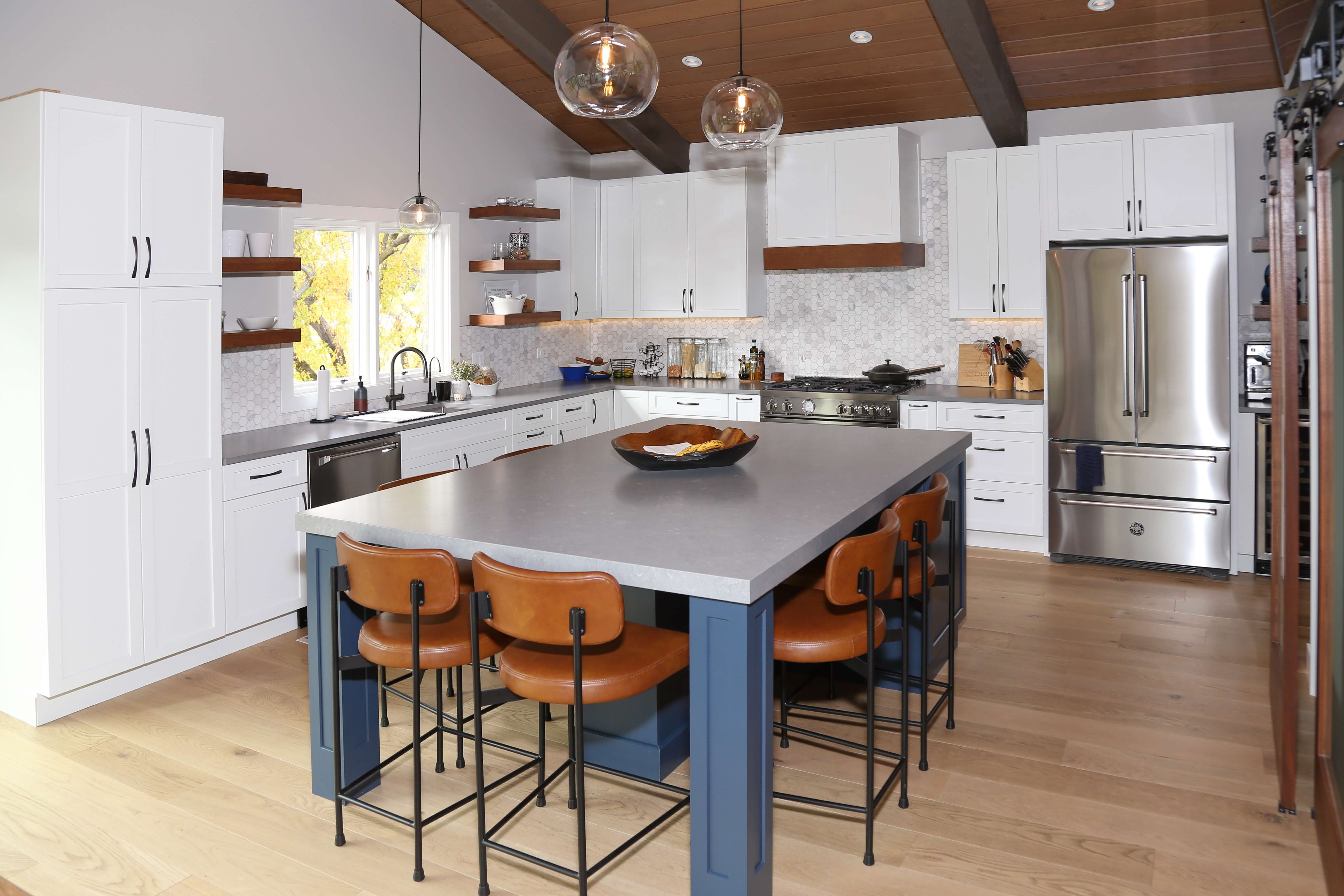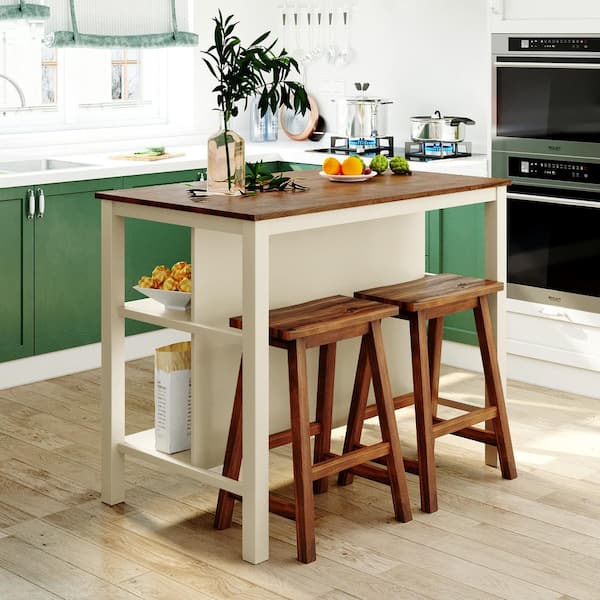A kitchen island table is a versatile piece of furniture. It can transform your kitchen space. This article will explore its benefits. We will also discuss design options and features.

Credit: www.durasupreme.com
What is a Kitchen Island Table?
A kitchen island table is a free-standing counter. It is not attached to any wall. It provides extra workspace. It can also serve as a dining area.

Credit: www.homedepot.com
Benefits of a Kitchen Island Table
A kitchen island table offers many benefits. Here are some key advantages:
- Extra Counter Space: It provides additional workspace. You can prepare meals more comfortably.
- Storage Solutions: Many islands come with drawers and cabinets. These offer extra storage for kitchen items.
- Seating Area: Some kitchen islands have seating. This can be a great spot for casual meals.
- Multi-functional: It can serve as a prep area, dining table, and storage unit. It is a versatile piece of furniture.
- Enhanced Aesthetics: It can improve the look of your kitchen. It can serve as a focal point.
Types of Kitchen Island Tables
There are different types of kitchen island tables. Each type has its unique features. Here are some popular options:
| Type | Description |
|---|---|
| Portable Kitchen Island | These islands have wheels. You can move them around easily. |
| Built-In Kitchen Island | These are fixed in one place. They are part of the kitchen structure. |
| Breakfast Bar Island | These islands have a seating area. They are great for quick meals. |
| Prep Station Island | These islands are designed for meal prep. They offer ample counter space. |
Design Considerations
When choosing a kitchen island table, consider the following:
- Size: Ensure the island fits your kitchen space. It should not obstruct movement.
- Style: Match the island style with your kitchen decor. It should blend seamlessly.
- Material: Choose durable materials. Common options include wood, granite, and stainless steel.
- Functionality: Think about how you will use the island. Choose features that meet your needs.
Installing a Kitchen Island Table
Installing a kitchen island table can be a DIY project. However, professional installation is recommended for built-in islands. Here are some installation tips:
- Measure your kitchen space. Ensure there is enough room for the island.
- Choose the right type of island. Consider your needs and kitchen layout.
- Prepare the space. Remove any obstacles and clean the area.
- Follow the manufacturer’s instructions. Ensure the island is secure and stable.
Maintaining Your Kitchen Island Table
Proper maintenance can extend the life of your kitchen island table. Here are some maintenance tips:
- Regular Cleaning: Clean the surface regularly. Use a mild cleaner and a soft cloth.
- Avoid Scratches: Use cutting boards when preparing food. Avoid placing sharp objects directly on the surface.
- Protect from Heat: Use trivets for hot pots and pans. Avoid placing hot items directly on the surface.
- Check for Damage: Inspect the island regularly. Fix any damage promptly to avoid further issues.
Frequently Asked Questions
What Is A Kitchen Island Table?
A kitchen island table is a multifunctional piece of furniture offering extra counter space and seating.
Can Kitchen Islands Be Moved?
Yes, many kitchen islands are designed to be movable for flexible kitchen layouts.
Do Kitchen Islands Add Value?
Yes, kitchen islands can increase both functionality and property value.
What Size Should A Kitchen Island Be?
The ideal size depends on your kitchen space, typically 4 feet by 2 feet.
Conclusion
A kitchen island table can be a valuable addition to your home. It offers extra workspace, storage, and seating. It can also enhance the look of your kitchen. Choose the right type and design for your needs. Proper maintenance will ensure it lasts for years.
Thank you for reading this guide. We hope it helps you choose the perfect kitchen island table. Happy cooking!
